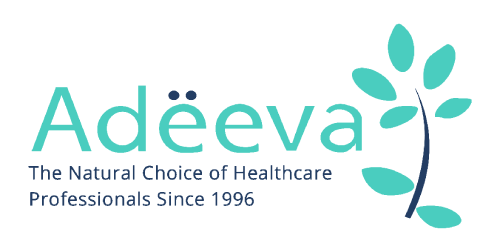
LMU 46 – Natural Strategies for Heavy Metal Detoxification: An In-depth Review
Source: The Scientific World Journal (2013)
Lifestyle Medicine Update (March 17, 2017)
Introduction
In the realm of health and well-being, the intricate connection between our lifestyles, dietary choices, and overall health outcomes is undeniable. A pivotal research paper published in the Scientific World Journal in 2013 by Margaret Sears from the Children’s Hospital of Eastern Ontario Research Institute, Ottawa, Canada, sheds light on an increasingly important aspect of health maintenance – natural heavy metal detoxification. This article critically examines the findings of the paper titled “Chelation: Harnessing and Enhancing Heavy Metal Detoxification – A Review,” aiming to unveil the significance of understanding heavy metal detoxification as a cornerstone of modern lifestyle medicine.
Unveiling the Study
The study by Margaret Sears is a noteworthy addition to the evolving understanding of heavy metal detoxification. Published in the Scientific World Journal in 2013, the paper delves into the intricate mechanisms and strategies for detoxifying heavy metals from the body.
Risks of Heavy Metal Exposure
Modern society exposes us to an array of heavy metals, including lead, cadmium, and mercury, which offer no essential biochemical roles within our bodies. The accumulation of these toxic elements can result in significant harm, manifesting as oxidative stress, endocrine disruption, and interference with vital mineral absorption. Lead, for instance, is particularly detrimental to the nervous system, while mercury’s bioaccumulation in fish and seafood poses a growing concern.
The FDA and EPA have instituted guidelines for fish and seafood consumption, especially concerning mercury intake. However, considering the persistent presence of heavy metals in the environment, it is crucial to explore natural avenues for heavy metal detoxification and prevention.
Natural Detoxification Strategies
Beyond limiting exposure to heavy metals, certain natural strategies have been identified to aid in detoxification and prevent further absorption. Here are a few key strategies:
- Sulfur-Containing Foods: Certain foods rich in sulfur have demonstrated the ability to bind with heavy metals. Notably, sulfur enhances solubility, enabling the body to eliminate heavy metals via urine or fecal routes. Garlic, onions, and cruciferous vegetables (e.g., broccoli, Brussels sprouts, cabbage) stand out as effective choices. These vegetables contain sulforaphane and indole-3 carbinol, compounds known for their anti-cancer properties.
- Dietary Fiber: Fiber derived from whole grains and fruits has shown promise in reducing mercury levels in the brain and blood. Psyllium husk fiber, present in products like Metamucil, interrupts the enterohepatic circulation, preventing re-absorption of heavy metals secreted into the gut.
- Essential Minerals: Essential minerals like calcium, selenium, and iron can help block the absorption of heavy metals. Selenium supplements are particularly effective in enhancing mercury excretion and reducing free radical damage. Calcium plays a role in blocking cadmium absorption and minimizing lead mobilization.
- Glutathione Precursors: Glutathione, a crucial protein in heavy metal detoxification, can be boosted using precursors like alpha-lipoic acid, N-acetyl cysteine, L-glutamine, and milk thistle. These compounds raise glutathione levels, optimizing heavy metal detoxification.
- Taurine and Methionine: Amino acids like taurine and methionine also contribute to detoxification. Methionine synthesis can be optimized through a balanced intake of protein-rich foods and adequate B-vitamins, such as folic acid and vitamin B12.
- Intravenous Chelating Agents: For severe heavy metal toxicities, intravenous pharmaceutical chelating agents can be administered by medical professionals. However, this is typically reserved for specialized cases rather than standard preventive measures.
- Exercise and Sauna: Regular exercise and sauna sessions can promote sweating, which aids in excreting toxic metals from the body.
Developing a Detoxification Strategy
Constructing a comprehensive heavy metal prevention and detoxification strategy involves multiple facets:
- Reducing Exposure: Limiting heavy metal exposure from the environment and food sources is essential.
- Incorporating Sulphur-Rich Foods: Regularly consuming sulfur-rich foods like garlic, onions, and cruciferous vegetables can aid in detoxification.
- Fiber Supplementation: Incorporating fiber, especially psyllium husk fiber, can interrupt re-absorption of heavy metals.
- Essential Minerals: Ensuring optimal intake of calcium, selenium, and iron can block heavy metal absorption.
- Glutathione Boosters: Utilizing alpha-lipoic acid, N-acetyl cysteine, L-glutamine, and milk thistle supplements can optimize glutathione levels.
- Taurine and Methionine: Amino acids taurine and methionine can contribute to detoxification.
- Balanced Supplements: A high-potency multiple vitamin and mineral supplement enriched with antioxidants like vitamin C, vitamin E, and selenium can aid in detoxification.
- Exercise and Sweating: Regular physical activity, including sauna use, can help excrete toxic metals through sweat.
Conclusion
The meticulous research conducted by Margaret Sears underscores the significance of understanding natural strategies for heavy metal detoxification. In an era where environmental exposure to toxic heavy metals is a pressing concern, adopting preventive measures and integrating detoxification practices becomes pivotal. A balanced lifestyle approach, combining mindful dietary choices, supplementation, and regular exercise, can pave the way for effective heavy metal detoxification and a healthier future.
References
- Sears, M.E., Chelation: Harnessing and Enhancing Heavy Metal Detoxification – A Review. Scientific World Journal, 2013. https://www.hindawi.com/journals/tswj/2013/219840
- Mercury – https://www.hindawi.com/journals/jeph/2012/460508
- Glutathione: http://www.dynamicchiropractic.com/mpacms/dc/article.php?id=54358
- EPA and Mercury: https://www.epa.gov/mercury/basic-information-about-mercury
Eat Smart, Live Well, Look Great!
Dr. Meschino

Dr. James Meschino
ABOUT THE AUTHOR
Dr. James Meschino, DC, MS, ROHP, is an educator, author, and researcher having lectured to thousands of healthcare professionals across North America. He holds a Master’s Degree in Science with specialties in human nutrition and biology and is recognized as an expert in the field of nutrition, anti-aging, fitness, and wellness as well as the author of numerous books.


